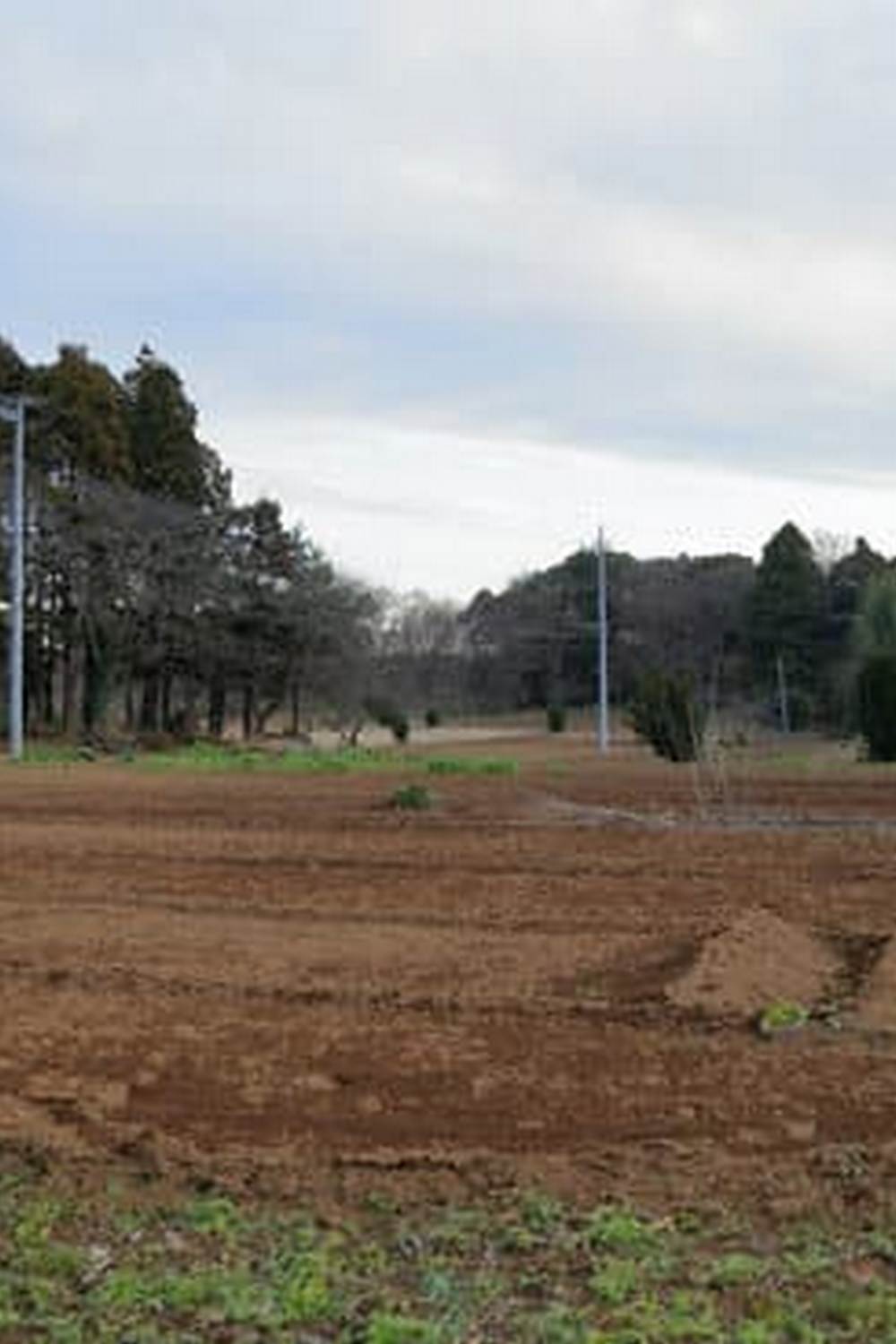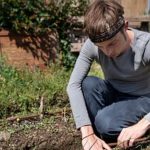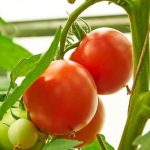Raised bed vegetable gardening in Arizona offers a practical and efficient way to grow fruits and vegetables in the arid climate of the state. By elevating plants above the ground level, gardeners can have better control over soil quality, drainage, and pests. This method is particularly beneficial in Arizona, where the soil can be challenging to work with due to its composition and lack of moisture retention.
One of the key advantages of raised bed gardening in Arizona is that it allows for improved water management. With proper irrigation techniques, gardeners can minimize water waste and ensure that their plants receive the right amount of moisture. Additionally, raised beds provide better drainage which is essential in preventing waterlogging, a common issue in many areas of Arizona.
Furthermore, raised beds offer flexibility for gardeners to customize their growing conditions by choosing the right location, soil mixtures, and plant selection. This method also enables gardeners to start planting earlier in the season as the elevated beds warm up faster than traditional garden beds. In the following sections, we will explore more benefits of raised bed gardening specific to Arizona’s unique climate and provide tips on how to maximize your harvest throughout the year.
Benefits of Raised Bed Gardening in Arizona’s Unique Climate
Raised bed vegetable gardening in Arizona offers numerous benefits, especially considering the unique climate of the region. One of the key advantages of raised bed gardening in Arizona is better control over soil quality and drainage. The arid desert climate of Arizona can present challenges for traditional in-ground gardening due to poor soil conditions and water retention. By using raised beds, gardeners can customize their soil mix to ensure optimal growing conditions for their vegetables.
Another advantage of raised bed gardening in Arizona is the ability to protect plants from extreme temperatures. The elevated nature of raised beds allows for improved air circulation, which can help prevent overheating during the scorching hot summers in Arizona. Additionally, raised beds can be covered with shade cloth or row covers to provide additional protection from intense sunlight or sudden temperature fluctuations. This can be particularly beneficial for heat-sensitive crops that may struggle in direct sun.
Furthermore, raised bed gardening in Arizona can help conserve water, a precious resource in this dry state. By containing the plant roots within a confined space, raised beds minimize water runoff and evaporation, allowing for more efficient irrigation practices.
Gardeners can also incorporate drip irrigation systems or soaker hoses into their raised beds to deliver moisture directly to the plants’ roots, reducing water waste and promoting optimal growth. Overall, the benefits of raised bed vegetable gardening make it an ideal option for cultivating a thriving garden in Arizona’s challenging climate.
Choosing the Right Location for Your Raised Bed in Arizona
When it comes to raised bed vegetable gardening in Arizona, choosing the right location for your garden is crucial to ensure the success of your crops. Here are some key factors to consider when selecting the perfect spot for your raised bed:
1. Sunlight: Most vegetables require at least 6-8 hours of sunlight per day to thrive. In Arizona’s hot climate, it’s essential to place your raised bed in a location that receives ample sunlight without being exposed to extreme heat during the peak hours of the day.
2. Wind and Air Circulation: Arizona can experience strong winds, especially in certain regions. To protect your plants from damage and promote healthy growth, consider positioning your raised bed in a location with some protection from strong gusts or use windbreaks if necessary.
3. Accessibility to Water: Given Arizona’s arid climate, access to water is crucial for the success of your vegetable garden. Make sure your raised bed is located close to a water source or irrigation system to ensure easy watering and proper hydration for your crops.
In addition to these factors, also consider any existing structures or trees that could provide shade or impact the growth of your vegetables. By carefully selecting the right location for your raised bed in Arizona, you can create an optimal growing environment for a variety of delicious and nutritious crops.
Selecting the Best Vegetables to Grow in a Raised Bed in Arizona
When it comes to selecting the best vegetables to grow in a raised bed in Arizona, it is essential to consider the unique climate and conditions of the region. With the intense heat and low humidity, certain vegetables thrive better than others in this environment. Opting for heat-tolerant varieties that can withstand the scorching Arizona sun is crucial for a successful raised bed vegetable garden.
Heat-Tolerant Vegetables
In Arizona’s hot climate, vegetables like tomatoes, peppers, eggplant, and okra are excellent choices for a raised bed garden. These heat-loving plants can handle the high temperatures and long hours of sunlight that characterize Arizona’s weather. Additionally, they tend to produce well in raised beds due to the improved soil drainage and aeration provided by this gardening method.
Drought-Resistant Options
Given Arizona’s arid conditions and limited water supply, choosing drought-resistant vegetables for your raised bed is a smart decision. Vegetables like beans, squash, melons, and sweet potatoes have adapted to survive with minimal water requirements. By selecting these varieties for your raised bed garden, you can conserve water while still enjoying a bountiful harvest of fresh produce.
Native Plants
Another option to consider when planning your raised bed vegetable garden in Arizona is incorporating native plants into your selection. Native vegetables like tepary beans, chiltepin peppers, and nopales (prickly pear pads) have evolved to thrive in the desert environment of Arizona. By including these indigenous crops in your raised bed, you can create a more sustainable garden that complements the local ecosystem while enjoying unique flavors and cultural heritage.
Building the Raised Bed
Raised bed vegetable gardening in Arizona offers numerous benefits, especially in the state’s unique climate conditions. When it comes to building the raised bed for your garden, selecting the right materials, size, and design considerations are crucial. The materials you choose for your raised bed should be able to withstand Arizona’s intense heat and dry weather. Cedar or redwood are popular choices as they are durable and naturally resistant to decay.
In terms of size, consider the space you have available and how much you plan to plant. Keep in mind that larger beds can hold more soil which can provide better insulation against high temperatures. Additionally, the design of your raised bed should take into account accessibility for maintenance and harvesting. Some gardeners opt for taller beds to reduce bending and stooping while others prefer lower beds for a less obtrusive look in their yard.
It is essential to ensure proper drainage in your raised bed as well. In Arizona’s arid climate, excess water can quickly lead to root rot or other issues. Consider adding a layer of gravel at the bottom of your bed before filling it with soil to improve drainage. With careful attention to materials, size, and design considerations, your raised bed vegetable garden in Arizona can thrive and provide you with an abundant harvest throughout the growing season.
| Raised Bed Material | Recommended Types |
|---|---|
| Wood | Cedar or Redwood |
| Size | Consider space available and amount of planting planned |
| Design | Accessibility for maintenance and harvesting |
Soil Preparation and Maintenance for Raised Bed Vegetable Gardening in Arizona
When embarking on raised bed vegetable gardening in Arizona, one of the most crucial aspects to consider is soil preparation and maintenance. The arid climate of Arizona presents unique challenges when it comes to ensuring that your plants receive the necessary nutrients and moisture to thrive. Here are some essential tips for preparing and maintaining the soil in your raised bed:
- Start by testing the soil pH levels in your raised bed. Arizona’s alkaline soil may require amendments such as sulfur or peat moss to lower the pH and make it more conducive to vegetable growth.
- When selecting soil for your raised bed, opt for a mix specifically formulated for vegetable gardens. Look for a blend that includes organic matter such as compost, perlite, and vermiculite to provide nutrients and improve drainage.
- Consider adding a layer of mulch on top of the soil in your raised bed to help retain moisture and prevent weed growth. Organic materials like straw, wood chips, or dried leaves can all serve as effective mulch options.
In addition to proper soil preparation, regular maintenance is key to ensuring the success of your raised bed vegetable garden in Arizona. This includes monitoring nutrient levels, addressing any deficiencies promptly, and practicing crop rotation to prevent depletion of specific elements from the soil. By taking these steps, you can create an optimal growing environment for your vegetables despite the challenges posed by Arizona’s desert climate.
Watering and Irrigation Tips for the Arid Climate of Arizona
Arizona’s arid climate presents unique challenges when it comes to raised bed vegetable gardening. With scorching heat and minimal rainfall, proper watering and irrigation are crucial for the success of your garden. One of the key factors to consider is the frequency of watering. In Arizona, especially during the hot summer months, raised beds often require daily watering to ensure that plants receive an adequate amount of moisture.
When it comes to watering your raised bed in Arizona, it’s essential to water deeply but infrequently. This encourages the plants’ roots to grow deeper into the soil in search of water, making them more resilient during periods of drought.
Mulching can also help retain moisture in the soil and reduce evaporation, ensuring that your plants have a constant water supply. Additionally, using a drip irrigation system or soaker hoses can be an efficient way to deliver water directly to the base of your plants, minimizing water waste through evaporation.
It’s important to monitor your raised bed closely and adjust your watering schedule based on the weather conditions and the specific needs of your plants. During particularly hot and dry periods, you may need to increase the frequency of watering to prevent wilting and plant stress. By staying attuned to your garden’s watering requirements and implementing smart irrigation practices, you can maintain a thriving raised bed vegetable garden in Arizona’s challenging climate.
| Watering Tips | Irrigation Strategies |
|---|---|
| Water deeply but infrequently | Consider using drip irrigation or soaker hoses |
| Monitor weather conditions | Adjust watering schedule accordingly |
Pest Control and Disease Prevention Strategies for Raised Bed Vegetable Gardening in Arizona
Identifying Common Pests in Arizona
Arizona’s unique climate and landscape present a variety of pests that can wreak havoc on your raised bed vegetable garden. Common pests in the region include aphids, whiteflies, spider mites, hornworms, and various types of caterpillars. It is essential to be able to identify these pests early on to implement effective pest control strategies.
Natural Pest Control Methods
One of the best ways to combat pests in your raised bed vegetable garden in Arizona is by using natural pest control methods. Many gardeners prefer avoiding chemical pesticides due to their potential harm to beneficial insects and the environment. Instead, consider introducing beneficial insects like ladybugs, lacewings, or parasitic wasps that can help keep pest populations in check. Additionally, planting companion plants like marigolds or basil can deter certain pests through their natural repellent properties.
Disease Prevention Techniques
In addition to pests, diseases can also pose a threat to your vegetables in Arizona’s raised bed gardens. To prevent diseases like powdery mildew, blight, or root rot, it is crucial to practice good gardening hygiene. This includes properly spacing plants for adequate air circulation, watering at the base of plants to avoid wet foliage, and regularly inspecting plants for any signs of disease.
In cases where diseases do appear, promptly remove affected plants or foliage to prevent further spread within your raised bed. Consider using preventative measures such as applying neem oil or copper fungicides as needed.
By implementing these pest control and disease prevention strategies in your raised bed vegetable gardening efforts in Arizona, you can ensure a healthy and thriving garden throughout the growing season. Remember to stay vigilant, monitor your plants regularly, and be proactive in addressing any issues that may arise to maximize your harvest yield.
Harvesting and Preserving Your Bountiful Arizona-Grown Produce
After weeks of hard work and dedication to nurturing your raised bed vegetable garden in Arizona, it is finally time to reap the rewards of your labor. Harvesting your homegrown produce at the peak of freshness is key to enjoying the best flavors and nutritional benefits.
One of the advantages of raised bed gardening in Arizona is that you have more control over the quality and timing of your harvest due to the well-drained, nutrient-rich soil and customizable growing conditions.
When it comes to harvesting your vegetables, it is important to pick them at the right time for optimal flavor and texture. For example, tomatoes should be harvested when they are fully ripe but still firm, while leafy greens like lettuce and spinach are best picked when they are young and tender. Be sure to use clean, sharp tools to avoid damaging the plants and handle the produce carefully to prevent bruising or other damage.
Once you have harvested your bountiful Arizona-grown produce, you may find yourself with more fruits and vegetables than you can consume immediately. In order to enjoy your harvest throughout the year, consider preserving some of your produce through methods such as canning, freezing, or pickling.
By properly storing and preserving your homegrown vegetables, you can savor the taste of summer even during the cooler months in Arizona. Planning ahead for preserving your harvest can ensure that none of your hard-earned produce goes to waste.
Success Stories and Tips From Experienced Raised Bed Vegetable Gardeners in Arizona
Raised bed vegetable gardening in Arizona has proven to be a successful and rewarding endeavor for many experienced gardeners in the region. By utilizing raised beds, gardeners have been able to overcome the challenges posed by Arizona’s unique climate, including intense heat, limited rainfall, and alkaline soil. Through innovative techniques and careful planning, these gardeners have reaped the benefits of a bountiful harvest year after year.
One key tip shared by seasoned raised bed vegetable gardeners in Arizona is the importance of selecting the right vegetables for your specific location. By choosing heat-tolerant varieties that thrive in arid climates, such as tomatoes, peppers, and cucumbers, gardeners can ensure a successful growing season.
Additionally, proper soil preparation and regular maintenance are crucial to the success of a raised bed garden in Arizona. Implementing organic mulches, compost, and fertilizer can help improve soil quality and ensure healthy plant growth.
Another valuable piece of advice from experienced raised bed vegetable gardeners in Arizona is to implement efficient watering and irrigation strategies. With the arid climate of Arizona posing challenges for water conservation, utilizing drip irrigation systems or soaker hoses can help gardeners efficiently water their raised beds while minimizing waste.
Additionally, practicing pest control and disease prevention measures, such as using row covers and natural pesticides, can help protect your crops from common pests and diseases prevalent in the region. Overall, with careful planning and dedication, raised bed vegetable gardening in Arizona can yield a vibrant and abundant harvest for all those who embark on this gardening journey.
Frequently Asked Questions
When Should I Start a Vegetable Garden in Arizona?
In Arizona, it’s best to start your vegetable garden in late winter or early spring. This timing allows the plants to establish themselves before the intense heat of summer. Make sure to consider the specific planting dates for each vegetable based on the local climate.
What Is the Easiest Vegetable to Grow in Arizona?
One of the easiest vegetables to grow in Arizona is peppers. Whether you choose bell peppers or spicy varieties like jalapenos, these plants thrive in the warm climate. Peppers require minimal care and can be quite productive throughout the growing season.
What Vegetables Grow Well in Raised Beds?
Several vegetables grow well in raised beds, such as tomatoes, cucumbers, lettuce, carrots, and radishes. The loose soil mix used in raised beds provides excellent drainage and aeration for these crops. Raised beds also help control weeds and pests more effectively compared to traditional gardening methods.

If you’re looking to get into vegetable gardening, or are just looking for some tips on how to make your current garden better, then you’ve come to the right place! My name is Ethel and I have been gardening for years. In this blog, I’m going to share with you some of my best tips on how to create a successful vegetable garden.





